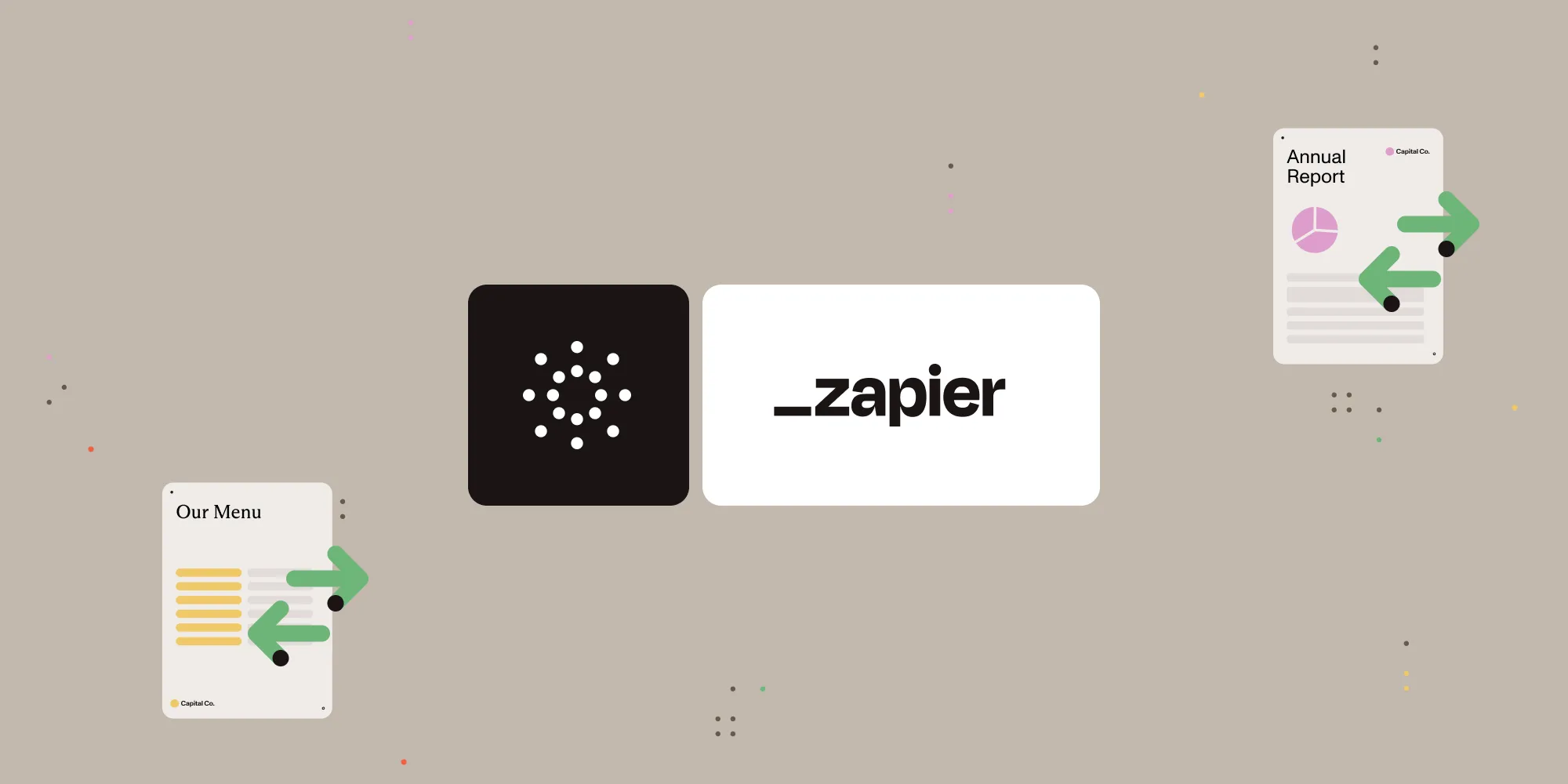Apply image watermarks to PDFs with Nutrient Document Web Services API on Zapier
Table of contents
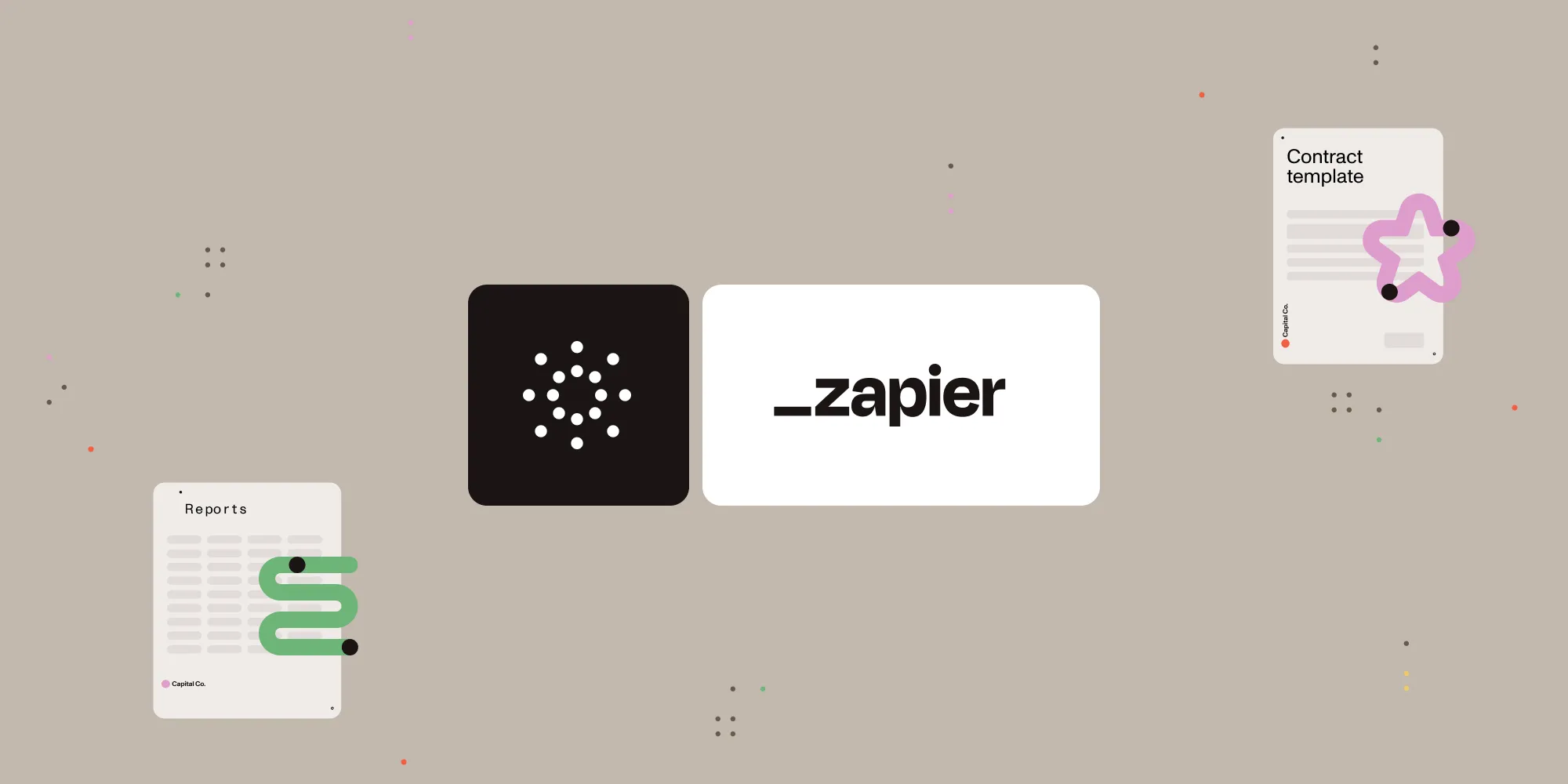
What is Zapier?
Zapier(opens in a new tab) is an automation platform that connects your favorite apps and services with no code required. You can build “Zaps” to automate repetitive tasks by setting up triggers and actions between apps like Google Drive, Slack, Gmail, and more.
In this tutorial, you’ll learn how to use Zapier to add image watermarks to PDFs using the Nutrient DWS Processor API.
What is the Nutrient DWS Processor API?
Nutrient Document Web Services API is a powerful platform for document automation. With your free account(opens in a new tab), you get 200 credits, which you can use to perform various document operations. Each tool (e.g. conversion, signing, flattening) consumes a different amount of credits depending on complexity.
Nutrient offers more than 30 tools with the ability to:
- Convert images and documents to PDF
- Merge, split, or reorder pages
- Add digital signatures, watermarks, or annotations
- Run OCR, redact, flatten, and more
All you need is an API key from a free account to get started(opens in a new tab). You can chain these tools together in Zapier to build powerful, automated PDF workflows.
What you’ll need
- A Zapier(opens in a new tab) account (a pro plan is necessary for multi-step Zaps)
- A Google Drive account
- A PDF file uploaded to a Google Drive folder
- A Nutrient Document Web Services API key — sign up here(opens in a new tab)
Step 1 — Trigger a new file in a Google Drive folder
Select Google Drive as the trigger app.
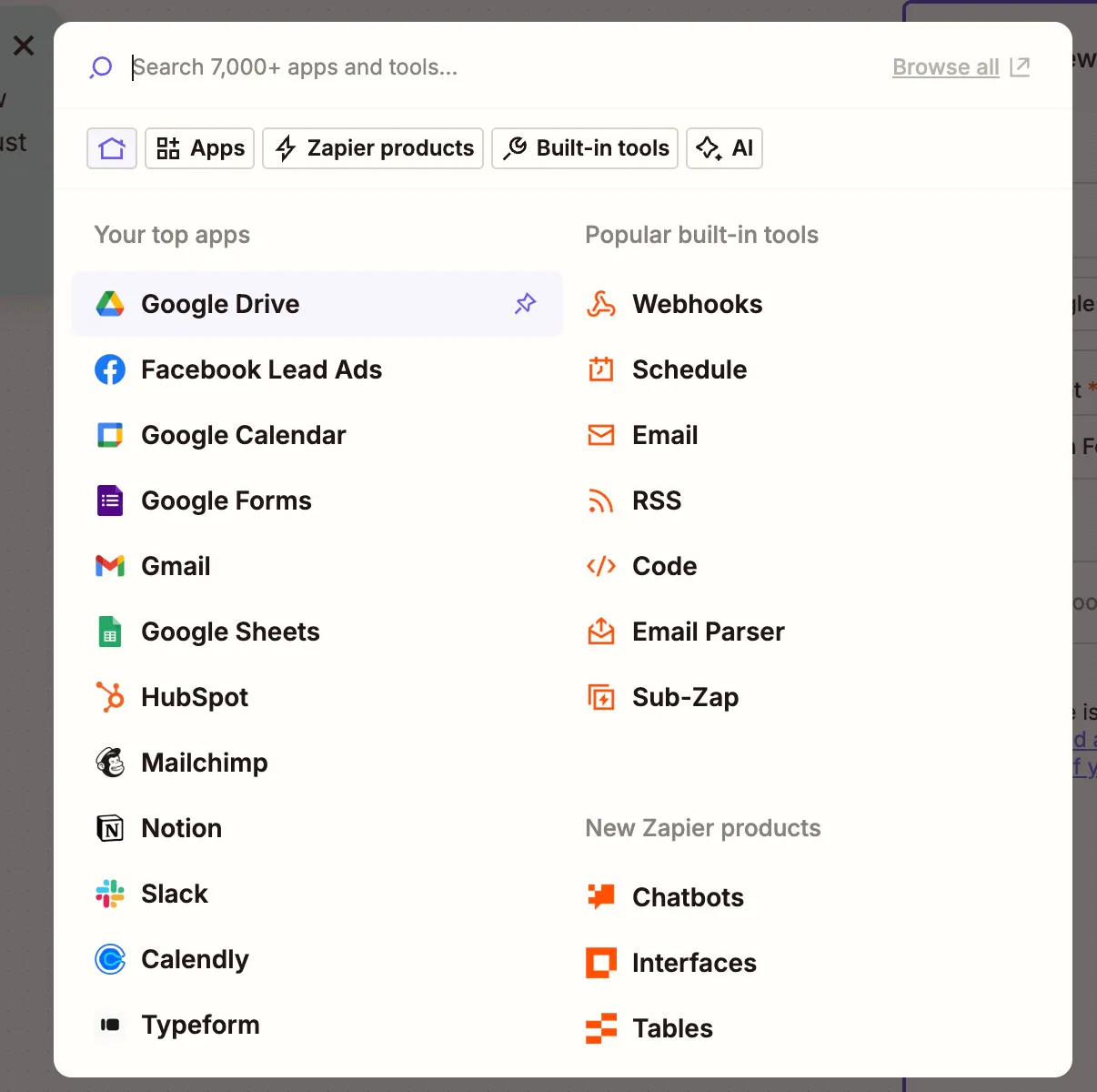
Choose the New File in Folder trigger event.
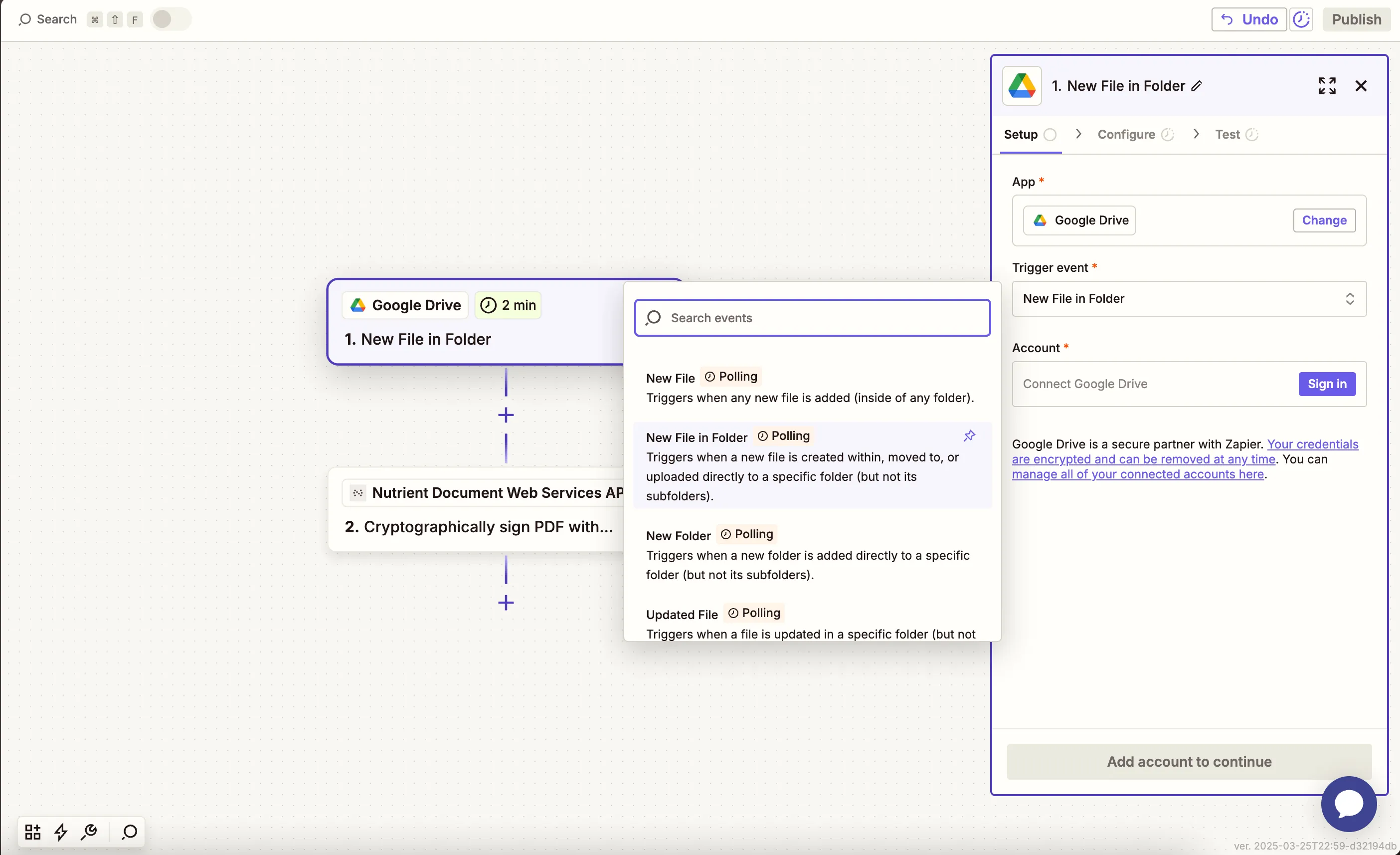
Connect your Google Drive account.
Configure the trigger:
- In the Drive field, select your Google Drive.

- In the Folder field, select or create a folder (e.g.
nutrient).
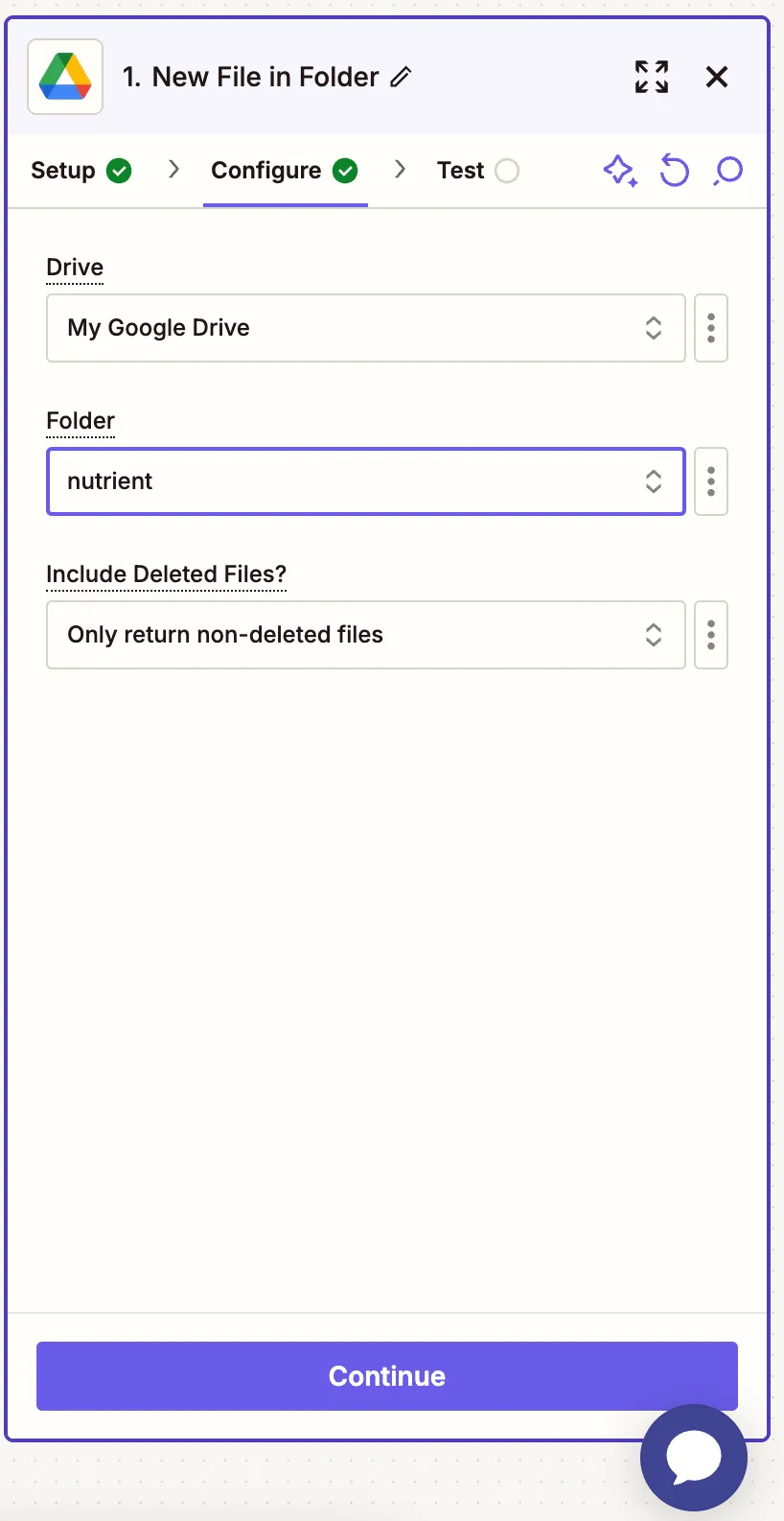
- Ensure that the option for Include Deleted Files? is set to Only return non-deleted files.
Once configured, test the trigger by selecting a sample PDF file from the folder to confirm it’s being pulled into the Zap correctly.
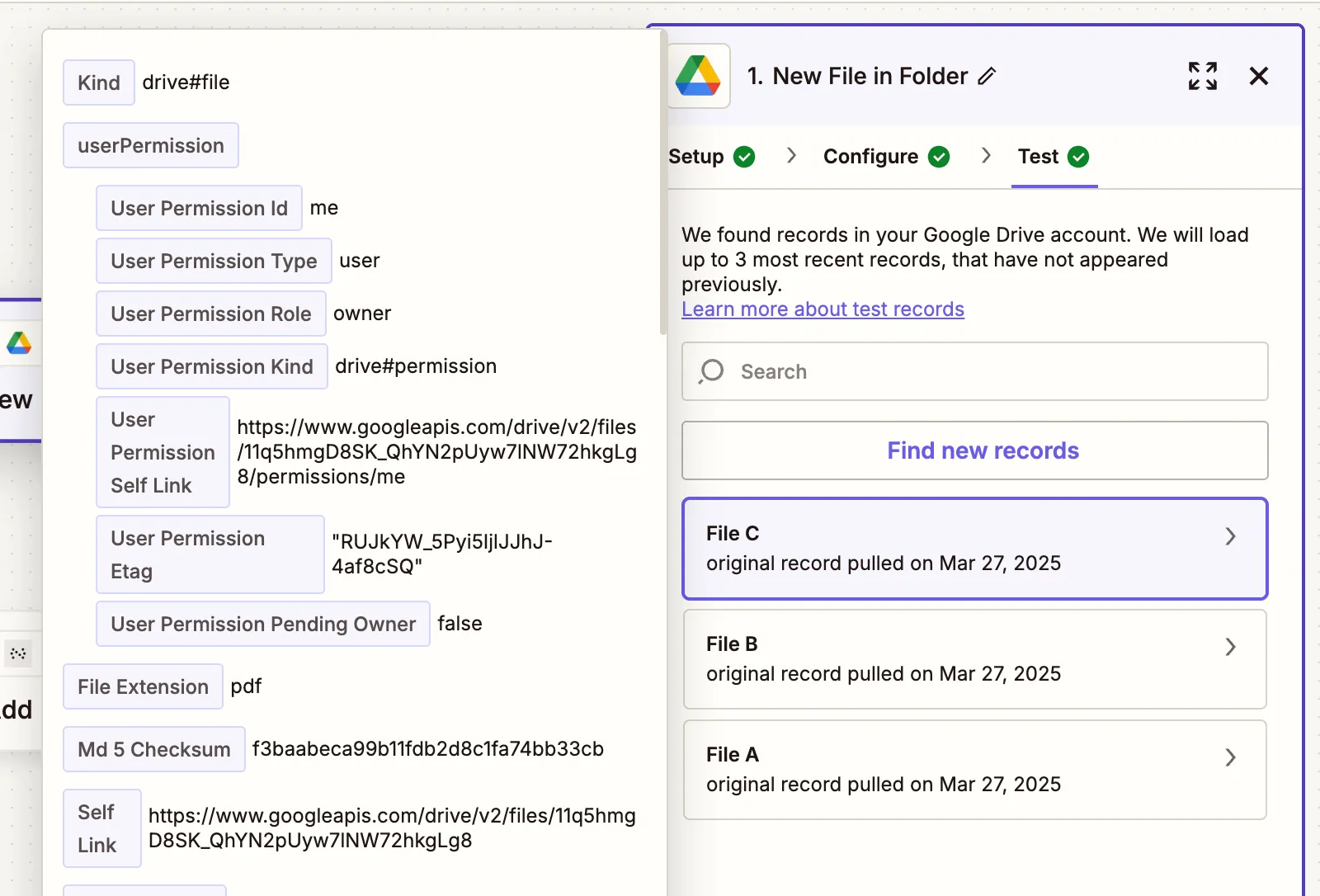
Step 2 — Apply watermark to PDF action (Nutrient DWS Processor API)
Next, select Nutrient Document Web Services API as the app.
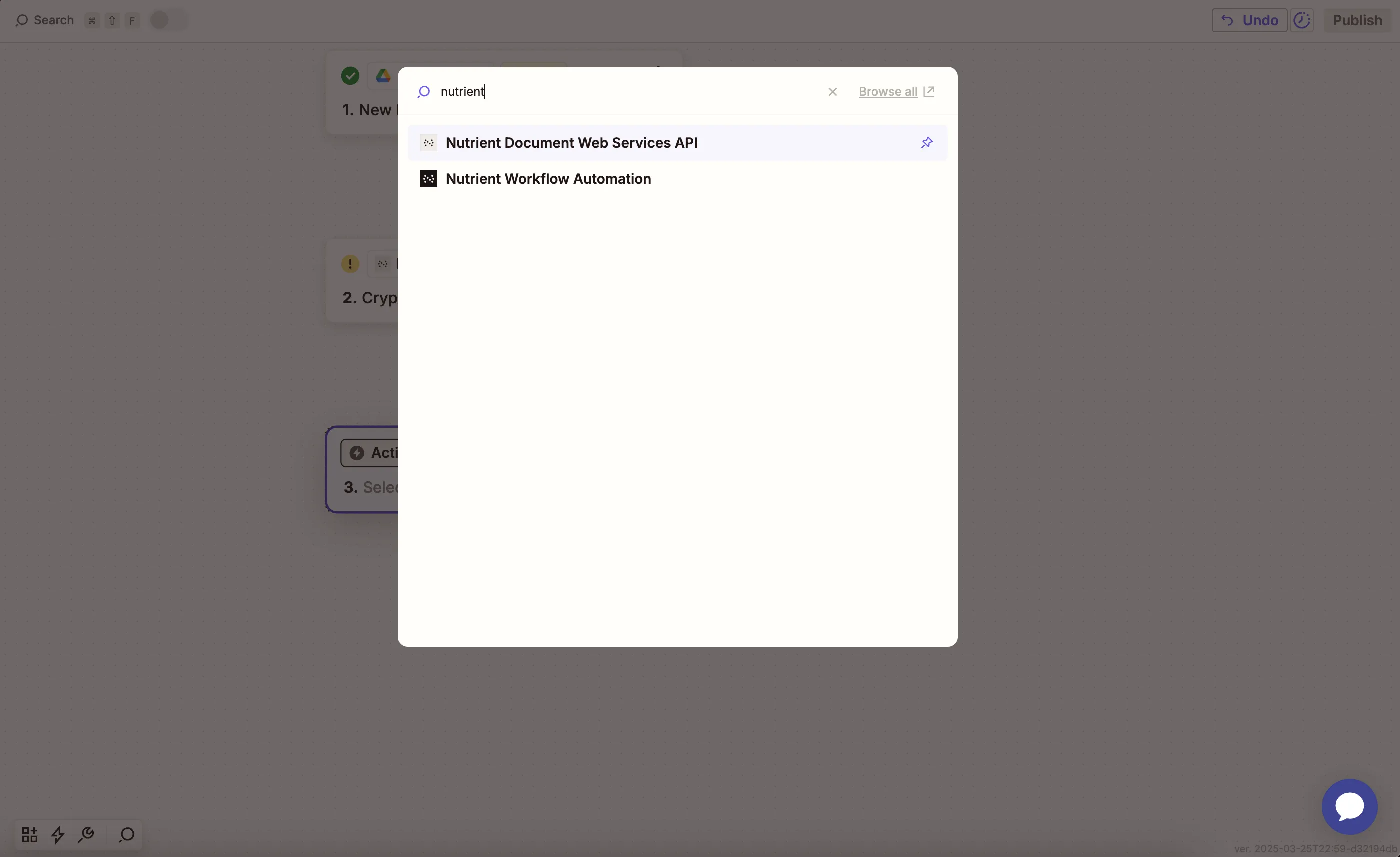
Choose the Apply Watermark to PDF action.
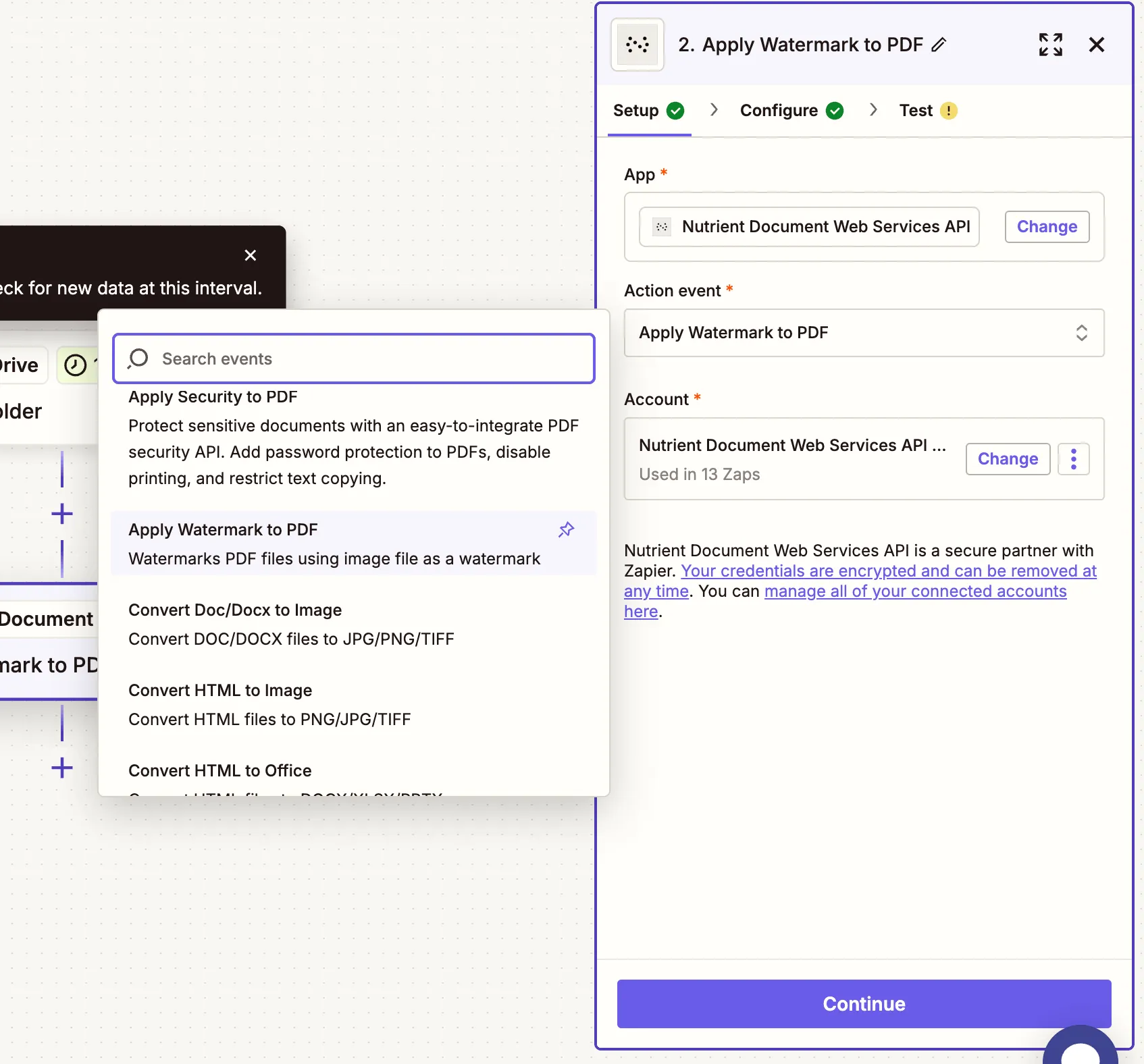
Connect your Nutrient DWS Processor API account by entering your API key.
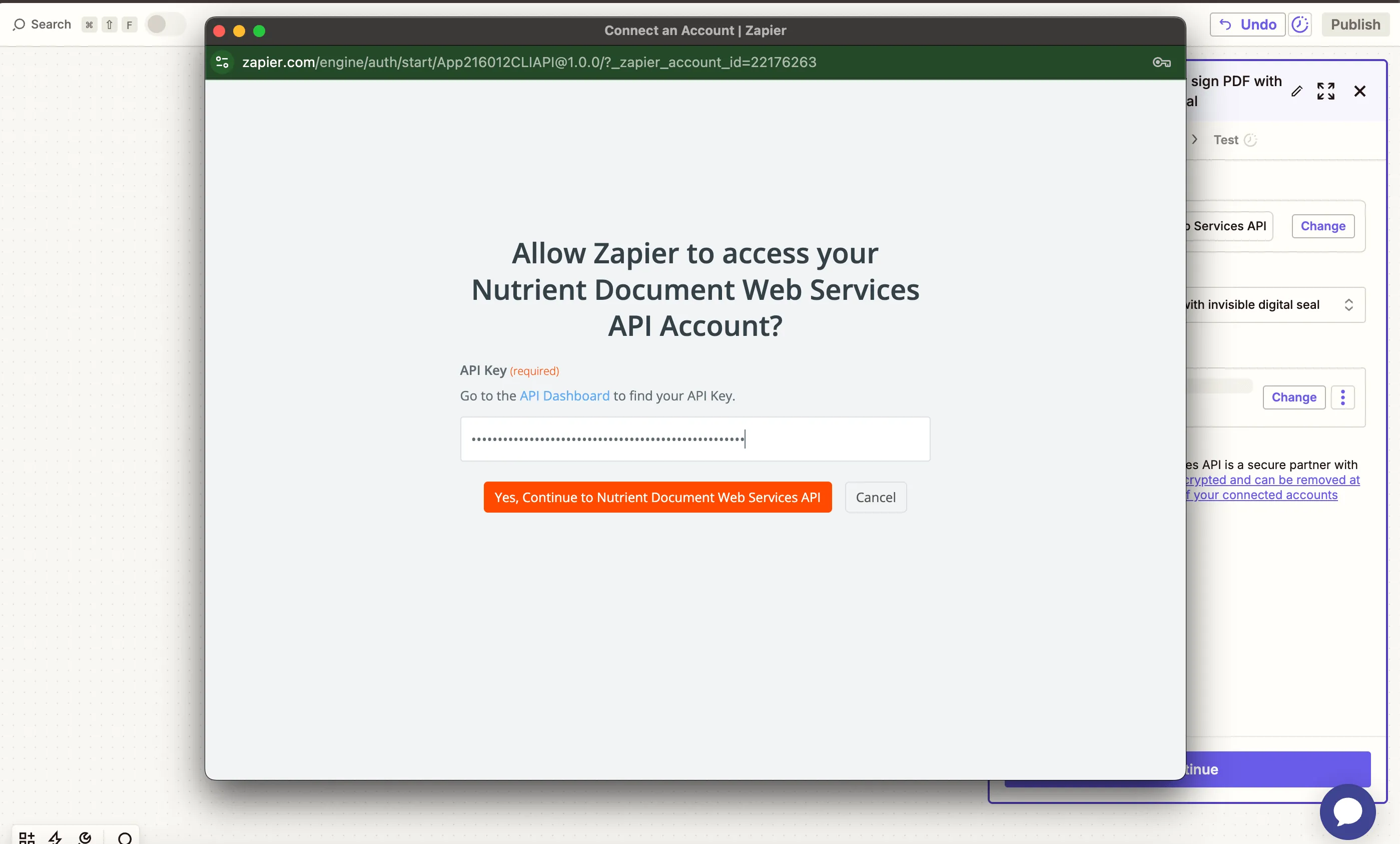
You can find your API key in the Nutrient dashboard(opens in a new tab).
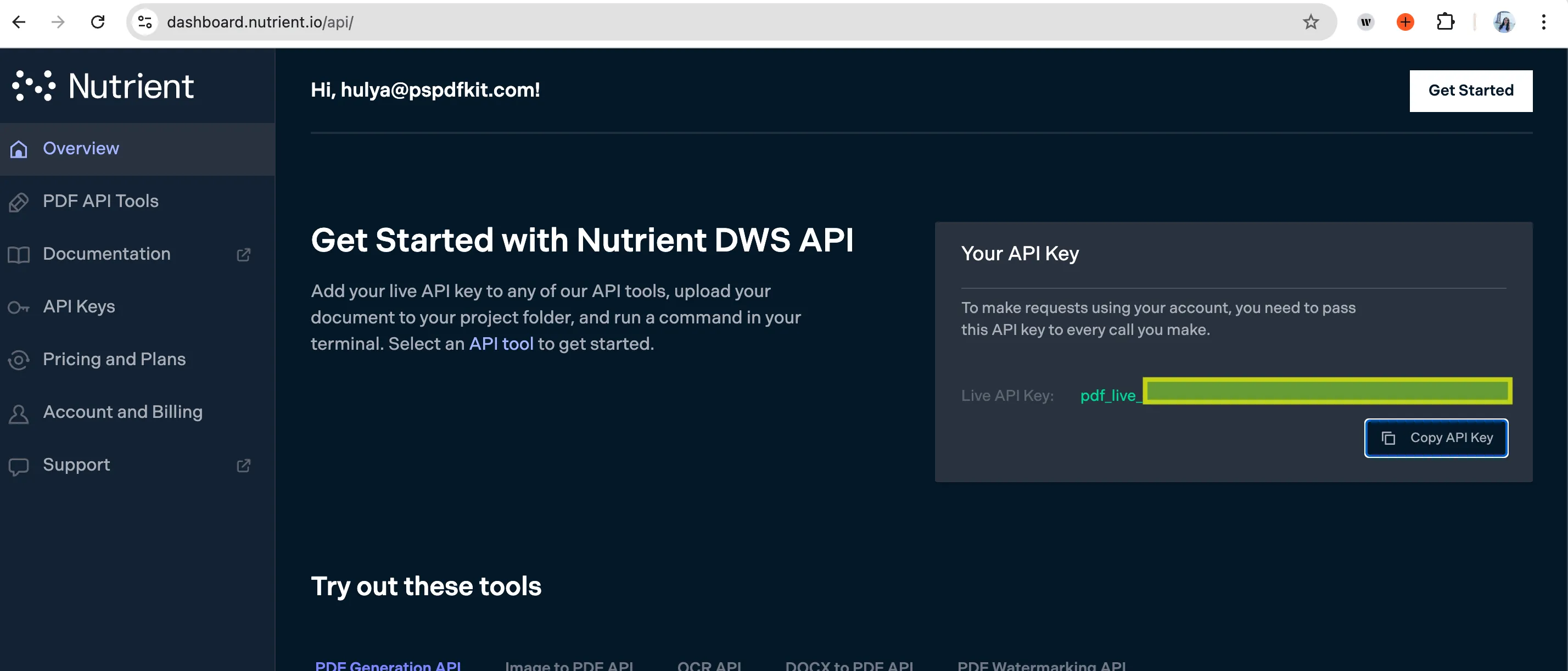
Fill out the following fields:
- PDF File URL — From step 1 (Google Drive)
- Watermark Image URL — This can be handled in two ways, outlined below.
Option 1 — Static image: If you’re always using the same image
- Upload the image to Google Drive.
- Make it publicly accessible so anyone with the link can view it.
- Use a direct download link by replacing the share link like this:
https://drive.google.com/file/d/FILE_ID/view?usp=sharing>https://drive.google.com/uc?export=download&id=FILE_ID
For example, this:
https://drive.google.com/file/d/1pxou2rdOCELaWEjMoxAIVG9kC_G-u-hD/view?usp=sharingbecomes:https://drive.google.com/uc?export=download&id=1pxou2rdOCELaWEjMoxAIVG9kC_G-u-hD
Make sure the watermarked image file is set to Anyone with the link in Google Drive so it can be used in the API call.
Option 2 — Dynamic image: If the image varies per file
- Add a new step: Google Drive > Find File.
- Search by name (e.g.
logo.png) and use the Web Content Link output. - Make sure the file is shared publicly.
- Fill the Output File Name field — Optional (e.g.
branded_file.pdf).
The file must be accessible via a public URL or direct download link (Zapier will handle this if sourced from Google Drive).
- Test this step to ensure the watermark is correctly applied.
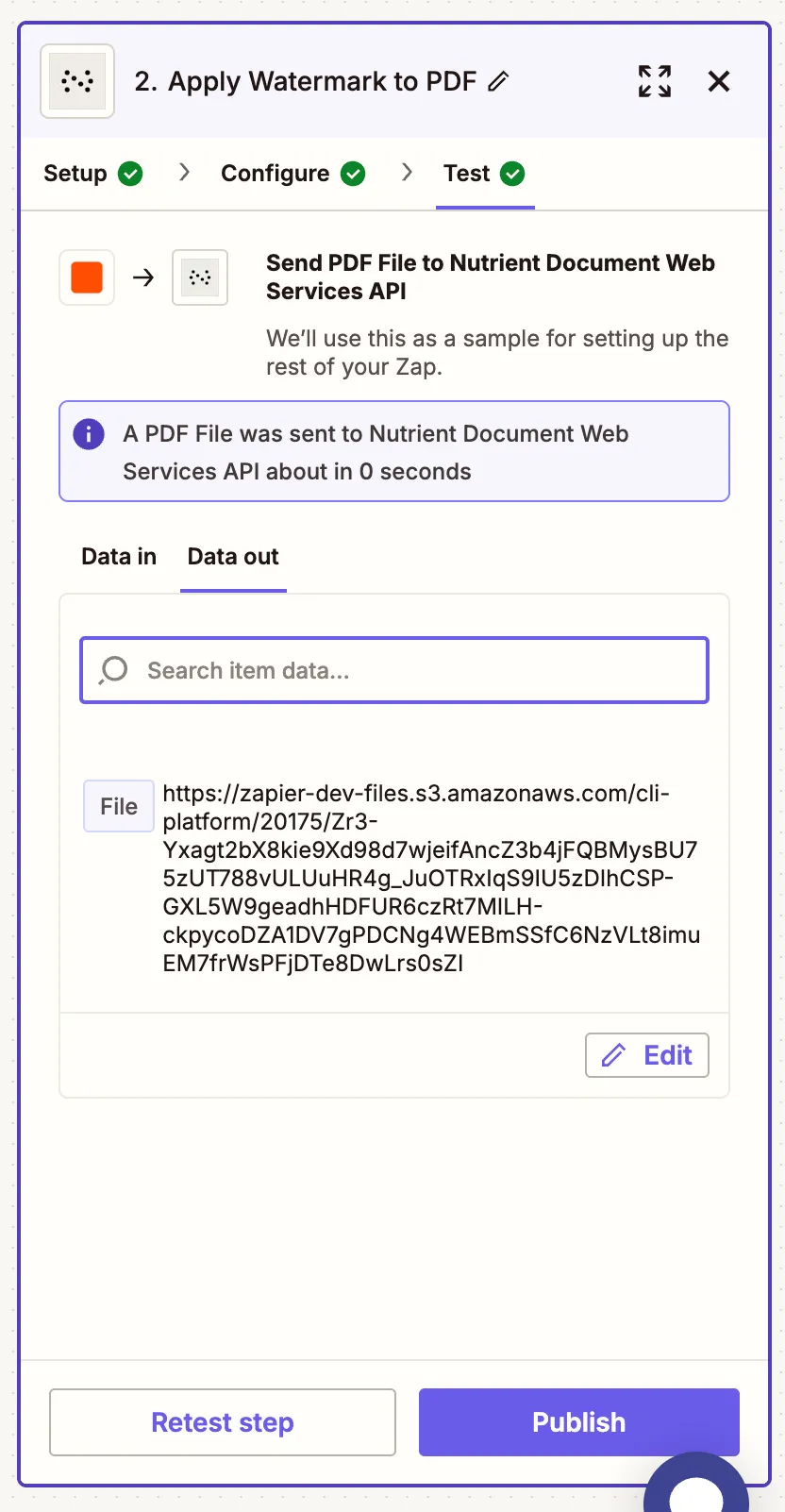
Step 3 — Upload the watermarked PDF to Google Drive
Now, add another step by selecting Google Drive as the app and Upload File as the action event. Connect your Google Drive account if needed.
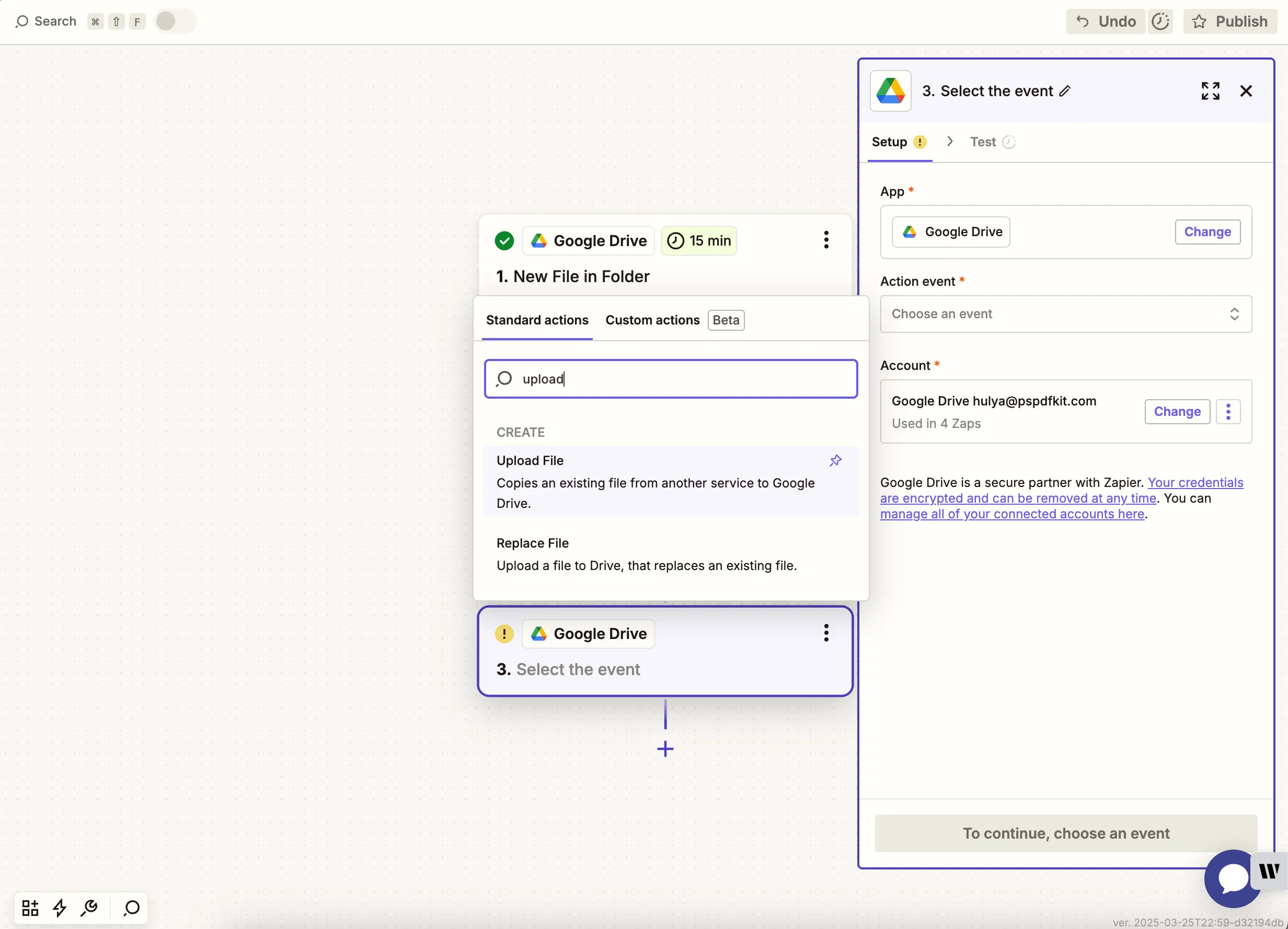
Select your drive and the folder where the updated PDF should be saved. In the File field, use the output from the Nutrient DWS Processor API step. Optionally, set a custom file name or extension to keep things consistent and organized.
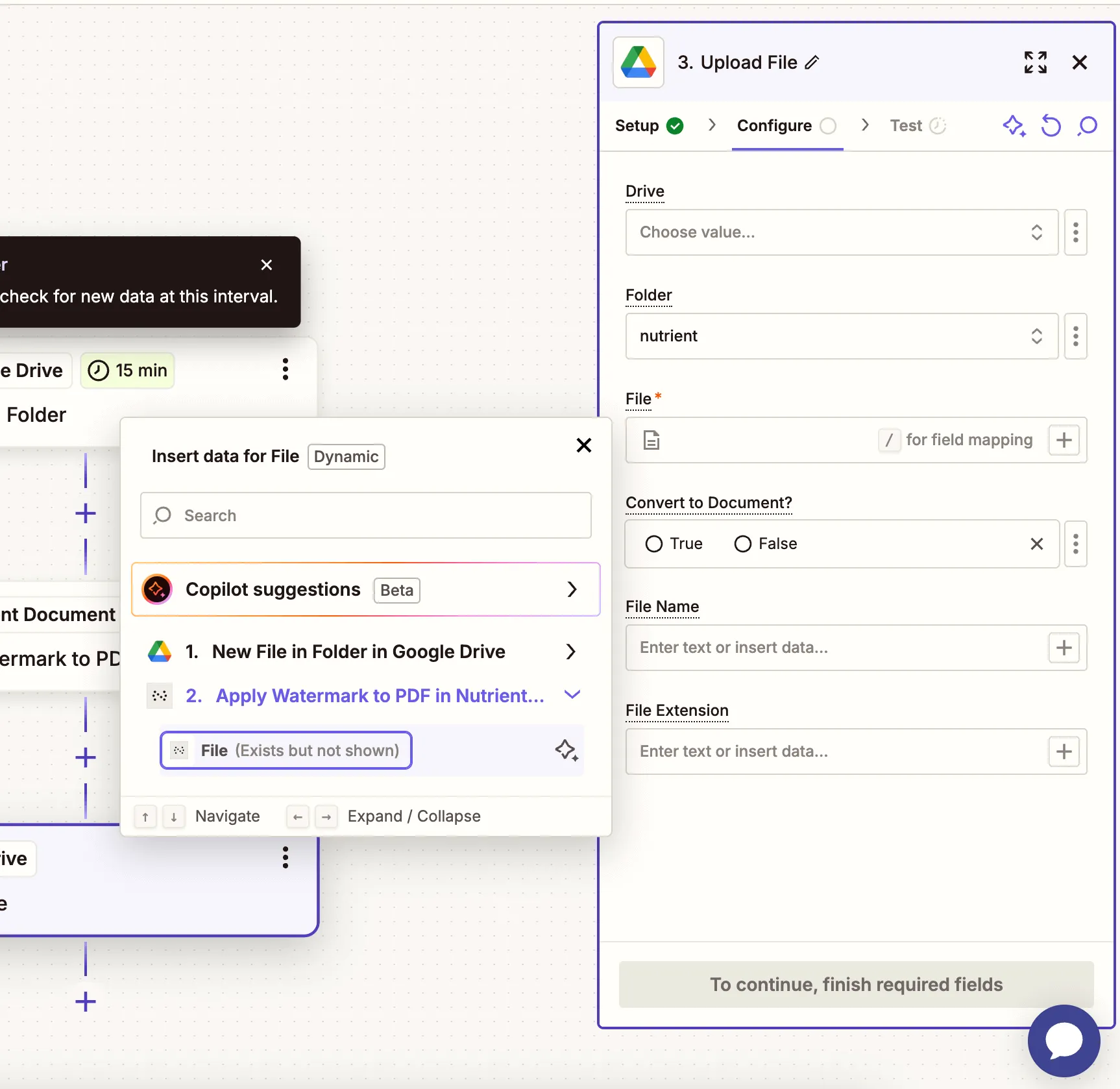
Zapier may warn you about a potential Zap loop if you use the same folder for the input and the output. You can avoid this by uploading the updated file to a different folder.
Run a complete test of the Zap to confirm:
- The PDF file is pulled in.
- The image watermark is applied successfully.
- The watermarked PDF is saved to your output folder.
Once everything works as expected, click Publish.
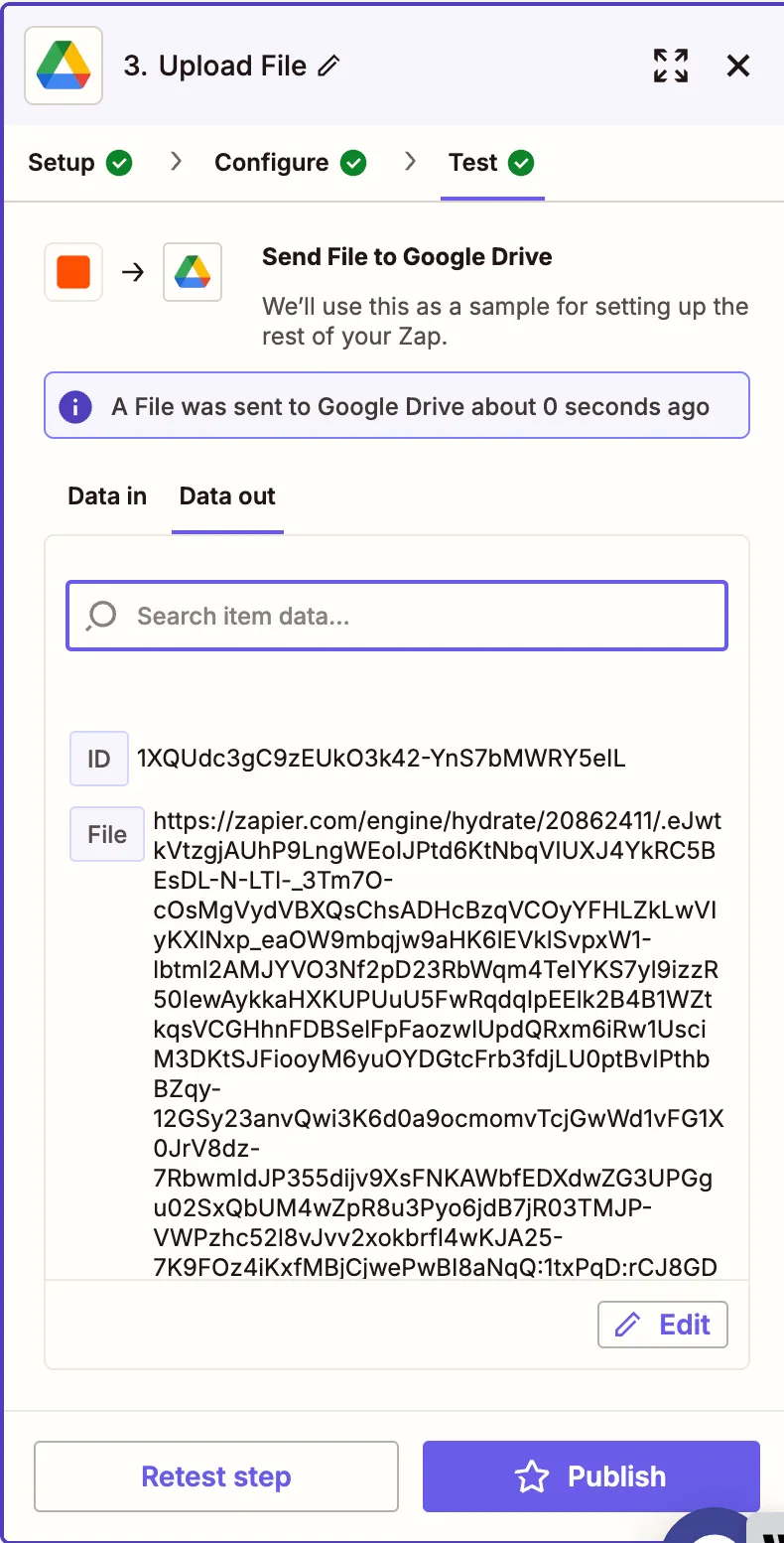
Conclusion
With this Zap, you’ve automated watermarking of PDF files(opens in a new tab) using a custom image. This is ideal for branding, approvals, or document classification. Combine this workflow with other Nutrient actions to build robust document pipelines.





